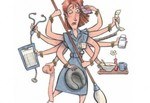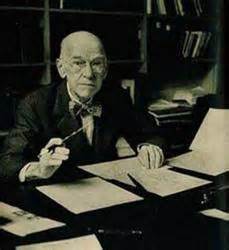All posts by Faris Islam
Hospital Quality Initiatives Save Nearly $1.5B
 In 2012, more than 1,500 hospitals participated with the Hospital Engagement Network (HEN) in an initiative aimed at reducing harm and cutting readmissions of patients, which led to saving more than $1.3 billion, according to a statement from the Health Research & Educational Trust (HRET).
In 2012, more than 1,500 hospitals participated with the Hospital Engagement Network (HEN) in an initiative aimed at reducing harm and cutting readmissions of patients, which led to saving more than $1.3 billion, according to a statement from the Health Research & Educational Trust (HRET).
HEN, a collaboration between Health Research & Educational Trust (HRET) and the American Hospital Association (AHA), is focused on improving healthcare quality, improve hospital infrastructures and promote a culture of quality.
In a news release by HRET, the program prevented:
-
- Nearly 19,000 early-elective deliveries
- More than 11,000 readmissions
- More than 8,500 infections
“The latest results from the HEN effort are outstanding and highlight the success that quality improvement professionals can make within their hospitals and health systems,” said Maulik Joshi, president of HRET and senior vice president for AHA.
This should be beacon for hospital executives and administrators who are searching for ROI on the quality and performance initiatives they are funding. Innovations in healthcare quality IT incident management and hospital management software, like the ActionCue application, are revolutionizing how hospitals provide care to patients. By introducing IT technologies perfected in other industries to the performance and quality management of hospitals, it is now becoming possible for administrators and front-line staff to visualize, in real-time, the performance of their hospital — allowing for near immediate actions to correct adverse incidents — preventing bad outcomes, improving patient care and dramatically reducing hospital costs.
A Tale of Reinvention
Have you heard the news? Nurses want to spend more time with their patients. Let’s see… it’s 2014 and we are still challenged with an issue that has been around since I was in nursing school (for reference, telephones all had cords back then). Healthcare is bursting at the seams with news of nurses wanting more time with patients, patients wanting more time with nurses, and concluding that when the twain shall meet, good things happen like infection rates go down, fall rates go down, and patient satisfaction goes way, way up [ http://on.wsj.com/1nZTwcM ]. That’s not the only tale we continue to tell. There is also the one about the franken-nurs e, the Quality-Risk-CaseManager-Chief Nursing Nurse with so many roles that she feels at a loss to authentically attend to any one of them unless led there by crisis.
e, the Quality-Risk-CaseManager-Chief Nursing Nurse with so many roles that she feels at a loss to authentically attend to any one of them unless led there by crisis.
Needs are identified across industries all the time, and they promote innovation and solutions – the mother of invention kind of thing. What would happen in the Communications industry if consumers expressed the need to interact with each other in real time? Guess what? It happened. Innovations galore – like Skype™, instant messaging, etc. – swept in to fill the gap created by the need. I haven’t read an article in a decade about people pining away for lack of online social connectivity.
Healthcare has done some great things and is now in a period of unprecedented evolution. So, now is a good time to fix long-standing process deficiencies (cultural deficiencies?) that keep patients and nurses from getting what they want.
I came across an intriguing article by Henry Doss about design thinking and its inspiring application to a problem identified by a healthcare clinic [ http://onforb.es/1jNuUHR ].
Venice Family Clinic in California was going to open a new clinic. Not only did the site require bricks and mortar construction, but they also took advantage of the opportunity to re-design how the y did everything from patient check-in, to patient experience. And, of course, any process changes had to be efficient and lower costs. When this idea was proposed to the hospital team – control costs while achieving high quality outcomes – it sounded like a contradiction in terms.
y did everything from patient check-in, to patient experience. And, of course, any process changes had to be efficient and lower costs. When this idea was proposed to the hospital team – control costs while achieving high quality outcomes – it sounded like a contradiction in terms.
The clinic administrators reached out to a design thinking company to jump start the creative process. Once in motion, the hospital team itself discovered their own inherent ability to think and create in a way that they hadn’t before. They asked these simple questions to begin with: “Should there be a check-in desk taking up most of the lobby? Should thirty waiting patients be funneled through six reception windows to receive care in the twenty-two available exam rooms? Must the patients be left idle while they wait for care? Is there a better way to use the clinic space and the patients’ time?” The clinic team was then shown how pit crews at auto races manage time and maximize efficiency. This led to the idea that someone with an iPad or similar would walk up and greet each patient as they arrived. Mobilize staff to go to the patient to avoid wait times. Thank you, pit crew. Other innovations were born as the team at Venice Family Clinic was handed a moment of creative confidence that isn’t usually a part of the milieu.
Challenges like nurses being buried in too many managerial roles and needing to spend more time with patients continue to play out in every healthcare system, and maybe it’s time to rethink how we think about it. Fastcompany [ http://bit.ly/1cTIMMk ] says “Defining the problem via design thinking requires the suspension of judgment in defining the problem statement. The right words are important. It’s not ‘design a chair’, it’s…’create a way to suspend a person’. Frame the problem in a way that invites creative solutions.”
I am fortunate to be able to see out-of-the-box thinking at ActionCue every day. A culture of empathy for what is going to improve the way the customer does her job is always at the top of the list. Any business – clinic and hospital included – can do this. Here’s a really fun video by Daylight Design, Inc. about how a team of design thinkers took on the very serious issue of childhood obesity. As you watch, be mindful of the process of thinking creatively about your specific issues and about who your priority is. Maybe there is a way to turn the story about long-standing problems into the moment that everything changed.
Who ‘Hawthorned’ the Data?
 Remember learning about the Hawthorne Effect? It’s a phenomenon first described by Elton Mayo and Fritz Roethlisberger, published in the late 1930s, in which “subjects in behavioral studies change their performance in response to being observed.” (http://hbs.me/1sGFCRy) As the theory developed, this was seen as employee motivation and productivity being enhanced by feeling special as a result of direct supervision, social participation in the workplace, and a host of other ground-breaking ideas at the time. Although the Hawthorne Experiments have been criticized over the years for lacking scientific rigor, the ideas generated from this work became the foundation of employee-as-human thinking, and it’s hard to argue with that. You pay attention to people and they do better work. So far so good, right?
Remember learning about the Hawthorne Effect? It’s a phenomenon first described by Elton Mayo and Fritz Roethlisberger, published in the late 1930s, in which “subjects in behavioral studies change their performance in response to being observed.” (http://hbs.me/1sGFCRy) As the theory developed, this was seen as employee motivation and productivity being enhanced by feeling special as a result of direct supervision, social participation in the workplace, and a host of other ground-breaking ideas at the time. Although the Hawthorne Experiments have been criticized over the years for lacking scientific rigor, the ideas generated from this work became the foundation of employee-as-human thinking, and it’s hard to argue with that. You pay attention to people and they do better work. So far so good, right?
This month, a Canadian study was published that looked at the relationship of hand hygiene compliance to hospital staff awareness of being observed washing their hands. (https://www.hbs.edu/faculty/Pages/item.aspx?num=52445) Predictably, staff compliance increased 300% when they were aware of an auditor lurking nearby. This was labeled by the researchers as a result of the Hawthorne Effect. The troubling conclusion was that due to data being collected while staff are observed, the actual hand hygiene compliance rate is being inflated in publicly reported data. The implications of inflated rates or, specifically, worse hand hygiene compliance than what is being reported, disturbs on several levels including decision-making and policy-setting based on inaccurate data.
The important part of this for hospitals is how to get accurate data. If the Hawthorne Effect is the golden ticket responsible for improved performance but also the culprit behind inaccurate data, then we have some sorting out to do. Yes, we want to see 300% improvement across all our quality measures – but does that mean always standing over people watching them hang IVs, administer medications, and use appropriate sterile technique? Not likely. Back in Elton Mayo’s day when the work force was still finding a respectful work place, it appeared that attention to the employee, so sorely missing back then, could take the form of manager proximity to the employee performing his or her duties. This was construed as being engaged, and the employee felt singled out in a very positive way. These days, we expect our staff to be conscientious whether or not the QI Director is auditing performance. And, equally as important, we want staff to know they are respected and their contribution to the organization is valued.
I was on the phone with an ActionCue client today, an infection control nurse at a small hospital, and we were talking about how she collects hand hygiene compliance data. She said that she is going to have other manager/supervisory staff make ten observations a month of hand hygiene compliance in the course of their regular day on the floor. If she has even three helpers, that is 30 additional observations a month. More observations lead to more reliable data, and different people will be responsible which will decrease the auditor presence that seems to “Hawthorne” the data.
So try this: 1.) Get more people involved in quality improvement by sharing data rates with all staff, 2.) allow more people to be responsible for data collection to improve data volume and reliability, and 3.) rotate data collection to increase accountability –we’re all in this together! You will simultaneously let staff know you value the integral part they play and, I believe, get real first-person data collection that you can trust.
Demand for “intelligence” in HC IT is catching on
A discussion on LinkedIn recently opened around an article by John Glaser, PhD, CEO of health services for Siemens Healthcare. He recently spoke at the HFMA conference in Orlando and told the audience, “most electronic health record [EHR] data is really crummy.”. Since this is a topic that is central to the creation and design of our ActionCue Clinical Intelligence application, I added my comments to that discussion.
We have said many times before that too many EHR systems and other HC applications are flat – simply letting users retrieve what they have entered, without much processing into the compound value-added answers the people who run hospitals really want to, and need to, see. We talk about rolling up from elemental facts to data, and to information, knowledge, intelligence and eventually insight – when the user understands what she or he needs to do.
That was a good point that Mr. Glaser and I shared, but in the comment we talked further about how context needs to be applied to move up that value hierarchy and that’s where a distinction divides diverse users and their needs in HC IT applications. Lots of people rightfully want medical intelligence that helps doctors be better doctors on a patient-specific basis. But people who run the clinical operations, need information in a different form and context. They need the “big picture” of the entire operation and it should be already prepared for them and presented in a fast, easy, understandable way, not simply available for the user to query piece by piece.
So that opens the door to understanding the remarkable intelligence and insight in ActionCue Clinical Intelligence that lets hospital executives and managers drive improvements in patient care and safety and see evidence-based results in just a few months. If you haven’t seen the ActionCue demonstration, request one here.
Better Medicine Through Improv
 What is the number one factor that everyone talks about when it comes to improving patient outcomes? Hands down it’s good patient communication. It’s well known that being in sync with your patient and his or her family early in the relationship is just as important as good clinical skills. But how do you know when that’s happening? How do you take relating with your patient to an art form?
What is the number one factor that everyone talks about when it comes to improving patient outcomes? Hands down it’s good patient communication. It’s well known that being in sync with your patient and his or her family early in the relationship is just as important as good clinical skills. But how do you know when that’s happening? How do you take relating with your patient to an art form?
Paul Haidet, MD, Director of Medical Education Research at Penn State College of Medicine, internist, and jazz DJ, made a unique discovery through his passion for jazz music (https://amednews.com/article/20100517/profession/305179943/7/). After years of research, he found that improvisation, a jazz hallmark, is a vital aspect of clinician-patient communication: “Jazz is a musical conversation and for that conversation to be harmonious and interesting, you’ve got to not only play your own solo, but you’ve got to be able to listen to the meaning that the other musicians are playing…That’s when jazz is at its best and, to be honest, that’s when medicine is at its best, too.”
At a meeting of the American College of Physicians, Dr. Haidet and Gary Onady, MD, PhD, an internist and pediatrician, led a session about improving patient communication skills (http://bit.ly/1lihXVL): “They described a physician’s range of skills within his specialty as his instrument. They compared a patient’s chart with song sheets. The riff, they said, is a physician’s rapid recall of knowledge. A physician needs to be ready to improvise when he or she walks into an exam room and encounters unexpected aspects of a patient’s illness.”
Fourth-year medical students at Penn State University get an opportunity to take Dr. Haidet’s class, “Jazz and the Art of Medicine.” Four fundamental skills are taught throughout the course:
- Managing the tension between structure and freedom.
- Finding meaning in another person’s communication.
- Finding your voice as a communicator.
- Using space effectively, i.e. allowing the patient to speak, rather than interrupting during the course of a conversation.
Good patient communication skills are for everyone involved in the patient care continuum. Anyone who participates on any level with the people coming to your hospital for care has to be in tune with effective interpersonal skills. What is your communication style? Can you trade solos with your patient? Maybe an evening with Miles Davis might provide some insight.
